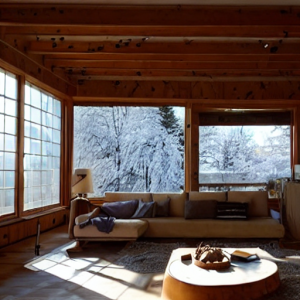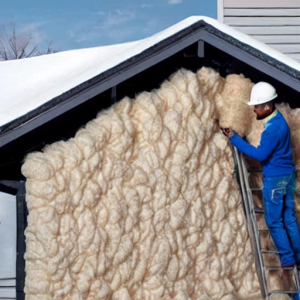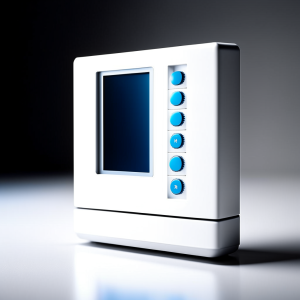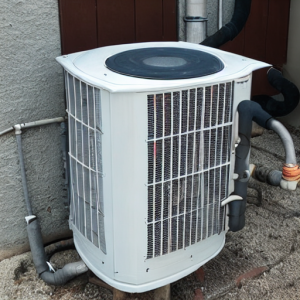Create a Warm and Inviting Winter Sanctuary While Reducing Energy Costs
As the cold winter months approach and frost coats the landscape, the desire to retreat into the warmth and coziness of your home becomes more pressing. However, the escalating costs associated with heating during this period can be daunting, especially for those who are budget-conscious. Fortunately, there are a plethora of energy-saving strategies that empower you to transform your home into a winter haven without straining your finances. This article presents practical, actionable tips and effective methods designed to keep your living space warm and inviting, ensuring that your energy costs stay within a reasonable range throughout the frigid season.

Boost Your Home’s Energy Efficiency by Detecting and Sealing Air Leaks
Many homeowners are surprised to learn that a substantial amount of heat loss occurs due to unnoticed air leaks. By effectively identifying and sealing these gaps, you can significantly enhance your home’s energy efficiency and reduce heating expenses. This thorough guide outlines practical strategies for locating and addressing air leaks around ventilation systems, windows, and doors:
- Windows:
- Inspect for Drafts: On blustery days, take the opportunity to meticulously examine the edges of your windows for any signs of drafts. Utilizing a candle or incense stick can aid in detecting subtle air movements, pinpointing leaks that require attention.
- Apply Weatherstripping: Install weatherstripping materials—such as adhesive-backed foam or V-strip—around window frames to establish a tight seal. Selecting the appropriate type based on your window design is critical for achieving effective insulation and maximizing energy savings.
- Doors:
- Check for Gaps: Carefully scrutinize the borders of your doors for visible gaps that might let cold air infiltrate your home. Observing these areas in a well-lit room at night can help you identify leaks more easily.
- Install Door Sweeps and Weatherstripping: Position door sweeps along the bottoms of doors to block drafts and apply self-adhesive weatherstrips along the sides to effectively seal any gaps that hinder energy efficiency.
- Vents and Ducts:
- Seal Ductwork: Ensure that your ductwork is sealed properly to prevent warm air from escaping into unconditioned areas. Utilizing a mastic sealer or foil tape can effectively secure any loose connections, optimizing overall system performance.
- Install Vent Covers: Magnetic or adhesive vent covers can manage airflow effectively, reducing drafts in less frequently used rooms while maintaining comfort in the main living areas of your home.
- Caulking and Sealant:
- Inspect Exterior Walls: Examine the outer surfaces of your home for any cracks or holes. Applying caulk or sealant to fill these gaps will prevent air and moisture from seeping in, contributing to enhanced energy efficiency.
- Select the Right Sealant: Choosing the appropriate sealant for your specific location and material type is crucial. Silicone is ideal for flexible joints, while acrylic caulk is better suited for indoor applications.
- Utilize Draft Stoppers:
- Place Along Door Bottoms: Employ draft stoppers, commonly known as door snakes, to block cold air from entering through the bottoms of doors. These fabric tubes can be easily positioned or removed as needed, providing an effective and quick solution to chilly drafts.
- Seek Professional Assistance:
- Consider Energy Audits: Engaging a professional for an energy audit can yield significant benefits. Experts utilize advanced tools, including thermal imaging cameras, to identify hidden leaks and recommend tailored solutions for your home.
Regular inspections coupled with prompt repairs of discovered air leaks not only enhance your home’s overall comfort but also considerably boost energy efficiency. By proactively sealing these gaps, you can reduce your energy bills and create a more welcoming living atmosphere during the winter months.
Leverage Natural Sunlight to Enhance Warmth and Atmosphere in Your Home
 Harnessing the power of natural sunlight during the winter months can greatly improve both the warmth and ambiance of your home. Here’s a comprehensive overview of effective strategies to make the most of daylight to your advantage:
Harnessing the power of natural sunlight during the winter months can greatly improve both the warmth and ambiance of your home. Here’s a comprehensive overview of effective strategies to make the most of daylight to your advantage:
- Daylight Utilization Strategies:
- Strategic Curtain Management: Keep curtains and blinds open during daylight hours to allow natural sunlight to flood your living spaces. Position them to fully expose windows, enabling sunlight to penetrate deeper into your rooms, thus maximizing warmth and brightness.
- Choose Sheer Fabrics: If privacy is a concern, consider using sheer curtains that permit sunlight to filter in while still providing some level of seclusion. This diffusion of light through sheer materials creates a warm and inviting atmosphere in your home.
- Solar Heat Gain:
- Understanding Solar Heat: The sunlight that enters your home can contribute to solar heat gain, particularly through south-facing windows that receive more sunlight during winter. This natural warmth can be advantageous for heating your space without incurring additional costs.
- Utilize South-Facing Windows: Make it a priority to open curtains and blinds on south-facing windows to maximize sunlight exposure. This is especially beneficial in colder climates, where every ray of sun counts.
- Nighttime Heat Retention:
- Close Curtains at Night: As evening temperatures drop, drawing your drapes and blinds serves to insulate your home, preserving the warmth collected throughout the day. Opt for heavier drapes or those with thermal linings for enhanced insulation.
- Invest in Insulated Window Treatments: Adding insulated drapes or shades can further reduce heat loss, effectively creating an additional barrier against cold air penetrating your living space.
- Ambiance and Well-Being:
- Enhance Indoor Lighting: Natural sunlight not only warms your home but also improves indoor lighting quality, decreasing the need for artificial lighting during the day. This reduction in reliance on electric lighting not only cuts energy consumption but also positively impacts your electricity bills.
- Incorporate Biophilic Design: Exposure to natural light has been linked to improved well-being. Allowing sunlight to enter your living areas can enhance your mood and productivity levels, creating a more enjoyable home environment.
- Window Maintenance:
- Clean Windows Regularly: Ensure that your windows are cleaned frequently to maximize sunlight entry. Regularly removing dust and debris from both the interior and exterior of your windows prevents obstructions that can limit natural light and warmth.
- Smart Home Technology:
- Consider Automated Window Treatments: Think about installing smart window treatments that can automatically open and close based on pre-set schedules, optimizing sunlight exposure and heat retention without requiring manual adjustments.
By integrating these tactics into your winter routine, you empower yourself to fully capitalize on the benefits of natural sunlight, crafting a warm and inviting ambiance in your home while also enhancing energy efficiency. By optimizing window treatments and understanding solar heat gain, you can significantly improve comfort levels and the atmosphere during the colder months.
Maximize Energy Efficiency with Effective Insulation Techniques
 Proper insulation is crucial for minimizing heat loss and enhancing the overall energy efficiency of your home. Developing a comprehensive insulation strategy that targets key areas such as the attic, walls, and basement will lead to a warmer and more cost-effective living environment during the cold winter months.
Proper insulation is crucial for minimizing heat loss and enhancing the overall energy efficiency of your home. Developing a comprehensive insulation strategy that targets key areas such as the attic, walls, and basement will lead to a warmer and more cost-effective living environment during the cold winter months.
Begin your energy efficiency journey by evaluating the insulation levels in your attic. Adequate insulation in this area helps prevent heat from escaping through the roof, acting as a vital barrier against cold air. Various insulation materials like fiberglass, cellulose, and foam board provide differing levels of effectiveness. Consulting with a professional can assist you in determining the most suitable insulation type and thickness for your attic to ensure peak performance.
Next, ensure that your walls are well-insulated to create a continuous thermal envelope around your home. Proper wall insulation helps maintain indoor temperatures by preventing heat from escaping through exterior surfaces. Insulation in exterior walls serves as a buffer against outdoor temperature fluctuations, making this a priority for improving energy efficiency and comfort.
While insulating your basement, give attention to both the walls and ceiling, if applicable. Uninsulated basements, often in direct contact with the ground, can be a significant source of heat loss. Use materials like rigid foam boards or spray foam insulation to effectively insulate basement walls. If the basement ceiling is unfinished, insulating it will establish a thermal barrier between the basement and the living areas above, further enhancing energy efficiency.
When selecting insulation materials, consider the R-value, which measures heat resistance. Higher R-values indicate improved insulation performance. However, the ideal R-value may vary based on factors such as climate, local building codes, and specific application areas, so ensure to conduct thorough research accordingly.
In addition to sufficient insulation, ensure that your home is properly sealed to prevent air leaks that could compromise insulation effectiveness. Avoid letting conditioned air escape through gaps around windows, doors, and other potential openings to maintain a comfortable home environment.
Investing in quality insulation not only aids in retaining warmth but also leads to significant long-term savings on heating bills. The initial investment in insulation yields dividends over time by reducing the necessity for constant heating and enhancing energy efficiency throughout your home.
For a comprehensive assessment, consider consulting insulation professionals or energy auditors. They can provide tailored recommendations based on your home’s unique characteristics, ensuring your insulation strategy aligns with both your energy-efficiency goals and the specific requirements of your living space.
Enhance Home Comfort and Savings with a Programmable Thermostat
 Investing in a programmable thermostat is a proactive way to optimize your home’s energy consumption while enhancing comfort levels. This intelligent device allows for flexible and automated temperature control, significantly improving your comfort and helping you save on energy costs.
Investing in a programmable thermostat is a proactive way to optimize your home’s energy consumption while enhancing comfort levels. This intelligent device allows for flexible and automated temperature control, significantly improving your comfort and helping you save on energy costs.
Automated Temperature Adjustments: One of the primary advantages of a programmable thermostat is its capacity to adjust to your daily schedule effortlessly. By pre-setting temperature changes based on your routine, you can ensure that your home is heated efficiently when needed, thereby avoiding unnecessary energy waste during times when you are away or sleeping.
Energy Savings through Setback Settings: Programmable thermostats enable you to implement setback settings during periods when you are away or asleep. Lowering the temperature during these times helps prevent your heating system from overworking. According to the U.S. Department of Energy, reducing the temperature by just one degree can lead to savings of up to three percent on home heating costs, which can accumulate substantially over time.
Tailored Comfort Levels: These devices allow you to customize temperature settings to match your personal preferences. You can program the thermostat to warm your home just before your return, ensuring a comfortable environment upon your arrival. This personalized approach enhances both energy efficiency and your overall satisfaction with your home’s climate.
Optimizing Heating Cycles: With a programmable thermostat, you can achieve more efficient heating cycles. The system operates with greater precision, reducing energy waste while maintaining consistent temperatures during periods when your home is occupied, adjusting appropriately when it’s unoccupied.
Smart Thermostats and Connectivity: The advancement of technology has introduced smart thermostats, which provide advanced features such as remote management via smartphone apps and integration with home automation systems. These capabilities offer unparalleled control and energy management, allowing you to monitor and adjust your home’s temperature even when you’re away.
Installation and Compatibility: Installing a programmable thermostat is generally a straightforward process, with many models compatible with existing heating systems. However, it is crucial to select a thermostat that fits your HVAC system and meets your home’s specific needs to maximize efficacy.
Considerations for Usage: While programmable thermostats are highly effective, careful programming is essential to maximize their benefits. Understanding your daily schedule and adjusting the settings accordingly ensures that the thermostat operates in harmony with your lifestyle, enhancing energy savings while maintaining comfort.
Achieve Unmatched Comfort with Effective Layering Techniques
 To bolster your comfort during winter, consider the straightforward yet effective method of personal layering before adjusting the thermostat. This strategy not only aids in cutting energy costs but also creates a more comfortable indoor setting, giving you greater control over your comfort levels.
To bolster your comfort during winter, consider the straightforward yet effective method of personal layering before adjusting the thermostat. This strategy not only aids in cutting energy costs but also creates a more comfortable indoor setting, giving you greater control over your comfort levels.
Clothing as Insulation: Consider your clothing as an additional layer of insulation for your body. By donning warm sweaters, thermal socks, and cozy slippers, you create a barrier against the cold, allowing for warmth without solely depending on heating systems. Choose materials such as wool and fleece, which are renowned for their excellent insulating properties, to maintain warmth.
Footwear Matters: Cold feet can greatly diminish your comfort indoors. Investing in insulated slippers or warm socks is crucial for keeping your feet cozy. This simple adjustment not only enhances warmth but also lessens the need to raise the thermostat temperature to compensate for chilly extremities, contributing to overall energy savings.
Layering for Bedtime Comfort: Extend the concept of layering to your bedding. Instead of immediately increasing the thermostat at bedtime, utilize additional blankets to create layers on your bed. Combining lightweight and heavier blankets allows you to customize the layers according to your comfort needs, resulting in a warm cocoon for sleeping that helps retain body heat.
Understanding the Science of Layering: Layering is a time-honored technique that focuses on conserving and capturing body heat. Each layer traps warm air, enhancing overall insulation. By mimicking the natural way our bodies regulate temperature, you can maintain comfort with less reliance on artificial heating, resulting in a more sustainable approach to winter warmth.
Benefits Beyond Energy Savings: Mastering layering provides advantages that extend beyond energy conservation. It encourages an eco-friendly lifestyle by minimizing the carbon footprint associated with increased heating demands. Additionally, layering fosters a sense of coziness and control over your environment, allowing for personalized warmth that enhances your overall comfort.
Seasonal Wardrobe Transition: As winter approaches, consider integrating additional insulating items into your wardrobe. Look for thicker fabrics, thermal undergarments, and accessories like scarves and gloves. By adapting your clothing to the changing seasons, you’ll be better prepared for a winter that is both comfortable and energy-efficient.
Mindful Thermostat Adjustments: Incorporating layering into your routine enables you to make thermostat adjustments more thoughtfully. Even minor changes, such as lowering the temperature by a few degrees, become achievable when paired with the added warmth offered by layered clothing and bedding, leading to greater energy savings.
Ensure Your Heating System Operates Efficiently with Regular Maintenance
 Proper maintenance of your heating system is vital for achieving a comfortable indoor temperature throughout winter while keeping energy expenses at bay. Prioritizing regular maintenance and professional servicing guarantees that your heating system operates at peak efficiency, providing reliable warmth when you need it the most.
Proper maintenance of your heating system is vital for achieving a comfortable indoor temperature throughout winter while keeping energy expenses at bay. Prioritizing regular maintenance and professional servicing guarantees that your heating system operates at peak efficiency, providing reliable warmth when you need it the most.
Furnace Filter Maintenance: Begin by closely monitoring your furnace filters. These filters are crucial for maintaining optimal airflow, which is essential for efficiency. Clean or replace filters regularly to avoid the buildup of dust and debris. Clogged filters restrict airflow, forcing the system to work harder and consume more energy, resulting in higher heating costs.
The Role of Airflow in Efficiency: Understanding the relationship between airflow and heating efficiency is critical. Unrestricted airflow allows the system to distribute heat evenly throughout your home, reducing the workload on the furnace. This leads to improved comfort and decreased energy usage, resulting in enhanced efficiency of your heating system.
Professional Inspection and Servicing: Never underestimate the importance of professional help for your heating system. Schedule a comprehensive inspection and servicing before winter arrives. Certified technicians can identify and rectify potential issues that may hinder system efficiency, ensuring you remain warm and comfortable during the colder months.
Preventive Maintenance Benefits: Investing in preventive maintenance yields long-term benefits. It not only aids in the early detection and resolution of problems but also prolongs the lifespan of your heating system. Routine inspections ensure all components function correctly, boosting productivity and reducing the risk of unexpected breakdowns that could leave you in the cold.
Efficiency Upgrades: Consider upgrading your heating system for enhanced efficiency. Newer models often come equipped with advanced features designed to maximize energy efficiency. While the initial investment may seem substantial, the long-term savings on energy bills and potential rebates make this a wise financial decision.
The Article Energy Hacks for a Budget-Friendly Cozy Winter Home Was Found On https://limitsofstrategy.com


This article resonates deeply with me, especially as I prepare for another winter in my drafty old house. I’ve always loved the idea of creating a cozy sanctuary during the chilly months, but the rising energy costs often overshadow my enthusiasm. The tip about sealing air leaks is so crucial; I learned the hard way last winter when I felt a draft in places I never expected! It’s staggering how much heat can escape through small gaps around windows and doors.
It sounds like you’re really experiencing the challenges that winter can bring, especially in a drafty house. Those little gaps can be sneaky, can’t they? It’s often surprising how something as small as a cracked window or ill-fitting door can impact overall warmth and comfort. I remember going through a similar experience in my own home; I found myself layering up indoors, thinking I was saving on energy costs, only to realize those drafts were negating any savings I thought I was making.
I can relate to your experience of preparing for another winter in a drafty old house. There’s something about creating that cozy space that makes the cold months feel more inviting, even though rising energy costs can really put a damper on the mood. Sealing air leaks truly is one of those small tasks that can make a significant difference; it’s surprising how much a simple fix can enhance both comfort and energy efficiency.
I completely share your sentiments about preparing for another winter in a drafty old house. There’s something almost ritualistic about the way we cozy up our spaces, isn’t there? It’s like we’re all trying to create little havens against the chill. The rising energy costs can certainly add a layer of anxiety to that process, though. It’s funny how the simple act of sealing air leaks can transform a room from feeling cold and uninviting to warm and snug.